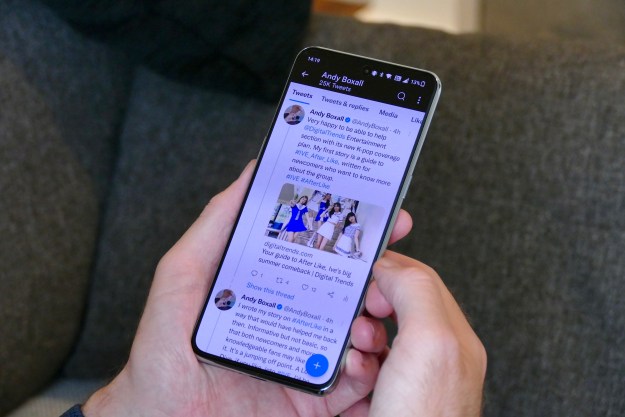If you’re new to the world of social media, you may not know exactly what a hashtag is or what you can do with one. Who can create hashtags? What are they used for? And how have these seemingly random combinations of letters and numbers changed how we navigate social media? #dontpanic. This is your guide to #hashtags.
So what is a hashtag?
A hashtag is a word or phrase that follows a pound sign (also known as a hash) and is used to identify specific posts on social media. A type of metadata, hashtags allow anyone to tag content on sites like Facebook, Instagram, and Twitter. Hashtags help users more easily navigate posts and engage in larger online conversations.
Hashtags are user-generated, not created by social media sites. While companies can make and sponsor their own hashtags, the tags themselves are not owned by any one company — and anyone with access to the internet can create one. Public opinion and engagement are responsible for what become popular hashtags and what content gets tagged. Sometimes this mean the intended meaning of a hashtag is lost (as in the case of #McDStories), but at their core, hashtags are all about generating buzz and encouraging conversation.
A brief history of hashtags
Hashtags as we know them have only existed for a few years. While hashes were used in Internet Relay Chat (IRC) in the ’90s to categorize items, they’ve taken off recently. The word “hashtag” was even added to the Oxford English Dictionary in 2014 to recognize the tag’s widespread use.
The concept of tagging posts with hashes to denote more than category started in 2007 when designer Chris Messina suggested that Twitter users begin using the pound sign to denote posts for groups. Messina effectively became the first person to use a hashtag on the social media platform, the effects of which can still be felt around the internet today.
how do you feel about using # (pound) for groups. As in #barcamp [msg]?
— molly.com/chris (@chrismessina) August 23, 2007
Shortly after Messina posted his landmark tweet, people began using hashtags to spread information regarding the 2007 San Diego wildfires. But it would still be several years before hashtags became super popular. Twitter began linking English hashtags in 2009 (turning them into clickable links that lead users to other similarly tagged tweets), and the site added support for Chinese and Japanese hashtags in 2011. Facebook eventually added support for hashtags in 2013. Nowadays, hashtags can be used almost anywhere.
How do you make a hashtag?
When it comes to actually creating a hashtag, there aren’t many rules as to what you can and can’t do, but some of the specifics depends on which platform you’re using. Sites such as Instagram have slightly stricter rules regarding hashtags than other social media sites, particularly regarding tags relating to drug use. Facebook also has strict rules about illegal activities, and actively searches for posts tagged with references to child abuse.
But in terms of specific requirements, a hashtag can be a lot of things. It can be funny or serious, and as long or short as you need it to be to get people engaging with your idea. The tag can contain letters, numbers, and underscores, and it isn’t case sensitive. It can not contain any spaces or punctuation, however (F$%K!). In certain situations, the use of embedded capitals (CamelCase) is used to eliminate confusion in meaning. So whether you search for #hamilton, #Hamilton, or #HaMiLtOn, you’re still going to be able to find posts related to the hit Broadway musical.

Hashtags in popular culture
Hashtags have seen their fair share of use in popular culture and have been used by countless companies and bloggers to generate engagement. Recent hashtags like #MeToo highlight the prevalence of sexual harassment and assault, while others like #OscarsSoWhite point to a lack of diversity in entertainment.
And even when they’re not leading movements or challenging the status quo, the way we use and apply hashtags in our daily lives has been the topic of discussion (and ridicule) for a long time. Back in 2013, Jimmy Fallon and Justin Timberlake made fun of hashtag culture in a video that has since garnered over 30 million views on YouTube. Last Week Tonight with John Oliver has also capitalized on the internet’s obsession with hashtags, creating over-the-top iterations such as #MakeAmericaDrumpfAgain, #NotMyChristian, and #WeUnderstandThatAsCorporateEntitiesOurPresenceInCertainDiscussionsIsNotAlwaysRequired SoWeWillStriveToLimitOurActivitiesToJustSellingYouShit (yes, that is a real hashtag). Hashtags can be found as on-screen bugs in a variety of programming as well, encouraging viewers to engage with content outside of that time slot.

Hashtags have drastically changed the landscape of social media and popular culture in the last few years. They have created more engagement in news and media, and have inspired dozens of social movements and initiatives. While they can be annoying (seriously any more than three hashtags in one post is way too many), they are an influential part of the way we get and spread information in the digital age. So use ’em or don’t, it doesn’t matter to us, but know the potential they carry — and that they’re easier to use than you might expect. #knowledge
Editors' Recommendations
- Bluesky barrels toward 1 million new sign-ups in a day
- Meta’s Twitter rival Threads to launch on Thursday
- Twitter braces itself after source code leaked online
- What is Twitter Blue and is it worth it?
- What is Mastodon? Here’s why everyone’s talking about this Twitter alternative


